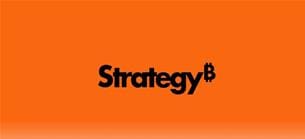ETFs & Dollar-Cost Averaging: Simple Strategy for Long-Term Investing
Werte in diesem Artikel
The performance of the S&P 500 so far in 2025 highlights the uncertainty in the markets. After a strong start to the year, rising 4.6% through mid-February, the broad market index reversed its course, falling about 10% by mid-March. However, the index seems to have regained strength, adding 4.5% since then.Increasing global growth concerns and chaotic U.S. tariff policies, fueling trade tensions, weigh on investor confidence which makes timing the market and active investment strategies increasingly difficult. In such a scenario, adopting a strategy like dollar-cost averaging to build a resilient investor portfolio is beneficial.What is Dollar-Cost Averaging?Dollar-cost averaging (DCA) is a strategy that helps investors navigate market uncertainty by automating security purchases, encouraging consistent and disciplined investing over time. DCA stands out as an effective strategy to create portfolio momentum and build wealth in the long term, ignoring short-term price fluctuations.DCA involves investing a fixed amount at regular intervals, regardless of the security’s price and current market conditions. By doing so, investors may lower their average cost per share and minimize the impact of market volatility on their portfolios. When prices recover, the potential gains will be even greater.The Case for Dollar-Cost AveragingThe main benefit of dollar-cost averaging is that it reduces the impact of investor emotions. DCA removes emotional behavior from investing, preventing investors from making impulsive decisions likepanic selling during downturns or overbuying in a rally, which can harm their portfolio. This is especially relevant in the current economic landscape.The chances of a U.S. recession have increased due to the escalating trade war. The market typically bottoms out and begins recovering before a recession ends.Understanding this allows you to capitalize on dollar-cost averaging and reduce your average cost per share in a declining market. Additionally, increasing your periodical investment amounts in a declining market, could be a smart move.Amid growing recession fears and economic slowdown, with consumers expecting inflation to rise over the next 12 months, dollar-cost averaging offers investors a smart way to navigate market uncertainty and potentially benefit from a downturn.Time in the Market, Not Timing the MarketDollar-cost averaging aims to remove the challenges and complexity of timing the market. Market timing means buying or selling investments based on predictions of market movements using fundamental, technical or economic data.Constantly monitoring the movement of securities and funds, can be a time-consuming and exhausting process. Even if an investor times the market perfectly, buying low and selling high, it can lead to higher tax obligations. Additionally, increased transaction costs and commission fees can erode profits, ultimately diminishing the benefits of market timing.Per experts, as quoted on CNBC, selling stocks during downturns and missing rebounds, in an attempt to time the market, is a major reason why investors underperform the broader market, more than often making poor decisions and inaccurate guesses.Investors who stay invested throughout economic cycles tend to outperform those who attempt to time their market entries and exits, according to Investopedia. This reinforces the principle of "time in the market, not timing the market."Market timing is a common strategy in actively managed funds. The struggles of actively managed funds highlight why DCA is better than market timing in today’s economy. According to the Los Angeles Times, 65% of U.S. large-cap mutual funds underperformed the S&P 500 in 2024, up from 60% in 2023.Dollar-Cost Averaging With ETFsFor new investors, dollar-cost averaging is a smart strategy, as it helps reduce market volatility by spreading out purchases and avoids the risk of investing a large sum at once. Implementing DCA with ETFs can be an ideal approach to build wealth and manage risk, with ETFs offering the additional benefit of instant diversification and tax efficiency.Additionally, DCA is beneficial for long-term investors who are less concerned with short-term market volatility or those who prefer a more hands-off investment approach.Below, we highlight a few ETFs for investors looking to implement dollar-cost averaging.Buying individual stocks with DCA without proper research can be challenging, as investors may keep purchasing when they should stop. For less-informed investors, DCA is a reliable and safe option when applied to ETFs tracking index funds.Investors should consider funds tracking major indexes like the S&P 500 or broad market funds covering nearly the entire U.S. market, aiming to build a more balanced and diversified portfolio.S&P 500 ETFsInvestors can consider Vanguard S&P 500 ETF VOO, SPDR S&P 500 ETF Trust SPY and iShares Core S&P 500 ETF IVV, which track the S&P 500. Regarding charging annual fees, both VOO and IVV are the cheapest options, charging 0.03%.All the three funds are among the largest funds in the United States, with VOO having the largest asset base of $619.9 billion, followed by SPY and IVV, with an asset base of $585.63 billion and $563.06 billion, respectively.Total Stock Market ETFsVanguard Total Stock Market ETF VTI, iShares Core S&P Total U.S. Stock Market ETF ITOT and Schwab U.S. Broad Market ETF SCHB can be considered. All three funds charge a similar annual fee of 0.03%.However, VTI has gathered a considerably large asset base of $447.87 billion compared to ITOT and SCHB, with an asset base of $62.59 billion and $31.16 billion, respectively.Over the long-term as investors become more comfortable with the strategy,they can then increase their exposure to more specialized funds in addition to the above funds, further diversifying their portfolio.Defensive funds offer a more conservative option for risk-averse investors, while those looking to slightly increase their risk appetite may consider growth-focused funds.Defensive ETFsInvestors can consider Vanguard Value ETF VTV and iShares Russell 1000 Value ETF IWD if they want to increase their exposure to value funds. VTV stands out as the more appealing option out of the two, charging a lower annual fee of 0.04% and having amassed an asset base of $137.21 billion.Both funds currently flaunt a Zacks ETF Rank #1 (Strong Buy).Growth ETFsFor investors looking to take a little more risk, growth funds such as Vanguard Growth ETF VUG and iShares Russell 1000 Growth ETF IWF can be considered. Both funds have Zacks ETF Rank #2 (Buy).VUG with an annual fee of 0.04% and an asset base of $147.38 billion is a better option among the two.Dividend ETFsInvestors can also look at funds with a focus on dividends. Reinvesting dividends can further support dollar-cost averaging by enabling regular purchases over time.Investors can consider Vanguard Dividend Appreciation ETF VIG and Schwab US Dividend Equity ETF SCHD, which have a dividend yield of 1.33% and 2.81%, respectively. However, VIG is the cheaper option among the two, with an annual fee of 0.05%. Want key ETF info delivered straight to your inbox?Zacks’ free Fund Newsletter will brief you on top news and analysis, as well as top-performing ETFs, each week.Get it free >>Want the latest recommendations from Zacks Investment Research? Today, you can download 7 Best Stocks for the Next 30 Days. Click to get this free report SPDR S&P 500 ETF (SPY): ETF Research Reports Vanguard Total Stock Market ETF (VTI): ETF Research Reports Vanguard Dividend Appreciation ETF (VIG): ETF Research Reports Vanguard S&P 500 ETF (VOO): ETF Research Reports Vanguard Value ETF (VTV): ETF Research Reports iShares Russell 1000 Growth ETF (IWF): ETF Research Reports iShares Core S&P 500 ETF (IVV): ETF Research Reports iShares Russell 1000 Value ETF (IWD): ETF Research Reports Schwab U.S. Broad Market ETF (SCHB): ETF Research Reports iShares Core S&P Total U.S. Stock Market ETF (ITOT): ETF Research Reports Vanguard Growth ETF (VUG): ETF Research Reports Schwab U.S. Dividend Equity ETF (SCHD): ETF Research ReportsThis article originally published on Zacks Investment Research (zacks.com).Zacks Investment ResearchWeiter zum vollständigen Artikel bei Zacks
Übrigens: Microstrategy und andere US-Aktien sind bei finanzen.net ZERO sogar bis 23 Uhr handelbar (ohne Ordergebühren, zzgl. Spreads). Jetzt kostenlos Depot eröffnen und als Geschenk eine Gratisaktie erhalten.
Ausgewählte Hebelprodukte auf Microstrategy
Mit Knock-outs können spekulative Anleger überproportional an Kursbewegungen partizipieren. Wählen Sie einfach den gewünschten Hebel und wir zeigen Ihnen passende Open-End Produkte auf Microstrategy
Der Hebel muss zwischen 2 und 20 liegen
| Name | Hebel | KO | Emittent |
|---|
| Name | Hebel | KO | Emittent |
|---|
Quelle: Zacks
Nachrichten zu Microstrategy
Analysen zu Microstrategy
| Datum | Rating | Analyst | |
|---|---|---|---|
| 11.02.2019 | Microstrategy A Buy | BWS Financial | |
| 27.10.2017 | Microstrategy A Buy | Mizuho | |
| 28.07.2017 | Microstrategy A Hold | Deutsche Bank AG | |
| 16.11.2016 | Microstrategy A Buy | Mizuho | |
| 11.01.2016 | Microstrateg a Buy | Deutsche Bank AG |
| Datum | Rating | Analyst | |
|---|---|---|---|
| 11.02.2019 | Microstrategy A Buy | BWS Financial | |
| 27.10.2017 | Microstrategy A Buy | Mizuho | |
| 16.11.2016 | Microstrategy A Buy | Mizuho | |
| 11.01.2016 | Microstrateg a Buy | Deutsche Bank AG | |
| 11.12.2015 | Microstrateg a Buy | Mizuho |
| Datum | Rating | Analyst | |
|---|---|---|---|
| 28.07.2017 | Microstrategy A Hold | Deutsche Bank AG | |
| 19.10.2015 | Microstrateg a Hold | Lake Street | |
| 31.10.2012 | Microstrateg a neutral | ROTH Capital Partners, LLC | |
| 30.10.2012 | Microstrateg a neutral | UBS AG | |
| 31.07.2012 | Microstrateg a neutral | UBS AG |
| Datum | Rating | Analyst | |
|---|---|---|---|
| 16.03.2005 | Update Microstrategy Inc.: Sell | Wedbush Morgan | |
| 09.02.2005 | Update Microstrategy Inc.: Sell | Deutsche Securities |
Um die Übersicht zu verbessern, haben Sie die Möglichkeit, die Analysen für Microstrategy nach folgenden Kriterien zu filtern.
Alle: Alle Empfehlungen


